Mining researchers train robot to search for critical minerals in abandoned mines
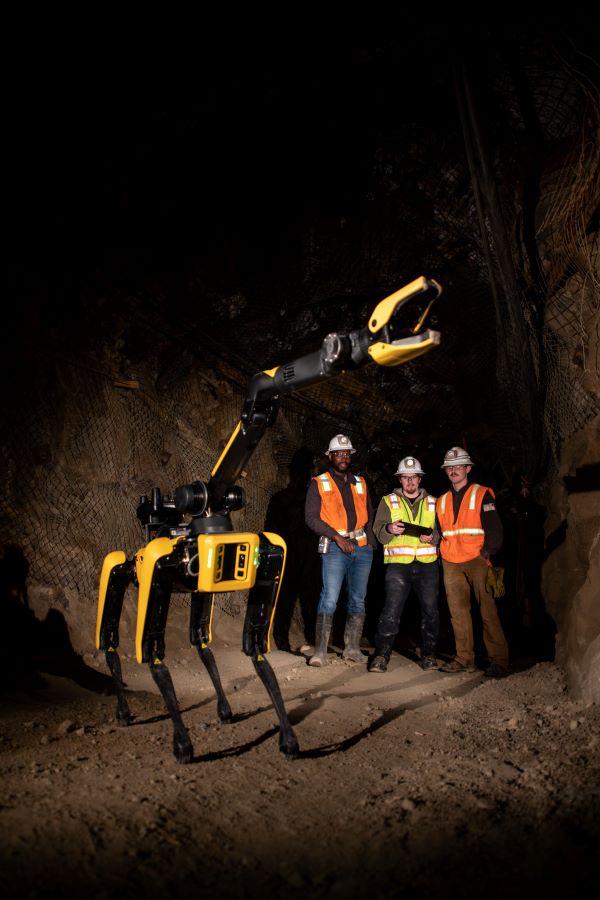
The U.S. Department of the Interior estimates there could be as many as 500,000 abandoned mine sites on federal land, and researchers at Montana Technological University’s Mining Engineering department are using novel robotic technology to see if any of those already disturbed sites might hold critical minerals.
“The United States at this moment does not have access to near the amount of critical minerals that are needed for the next stage of advanced electronics,” Associate Professor of Mining Engineering Dr. Abhishek Choudhury said. “China has about 60% of critical and rare earth mineral production and 85% of the processing capacity. The U.S. hasn’t even explored what exists within its boundaries, and in a lot of mines in the mountain west, they historically did not look for these critical minerals. We might have many of these mines around that have these minerals.”
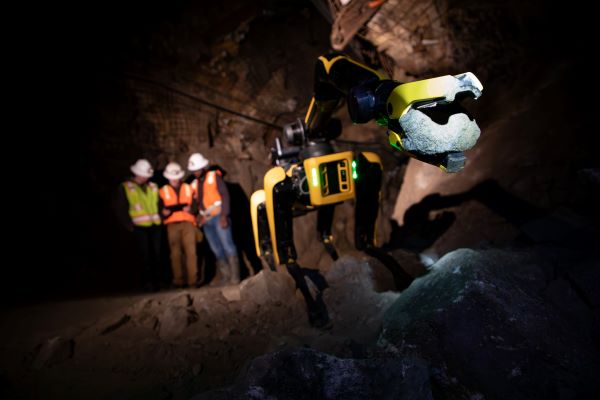
Choudhury and his students are training a $295,000 “SPOT” robot from Boston Dynamics to go where it is unsafe for humans to explore in these abandoned mines. The project is funded through a Cooperative Agreement with the DEVCOM Army Research Laboratory, which has supported more than a dozen projects on Montana Tech’s campus in pursuit of building a domestic supply chain of critical minerals. The funding has been made possible through the efforts of Senator Jon Tester, chairman of the Senate Defense Appropriations Subcommittee, who has championed Montana Tech’s collaboration with military organizations in recent years. That collaboration has facilitated access to cutting edge equipment, facilities, and research that would not otherwise have been possible.
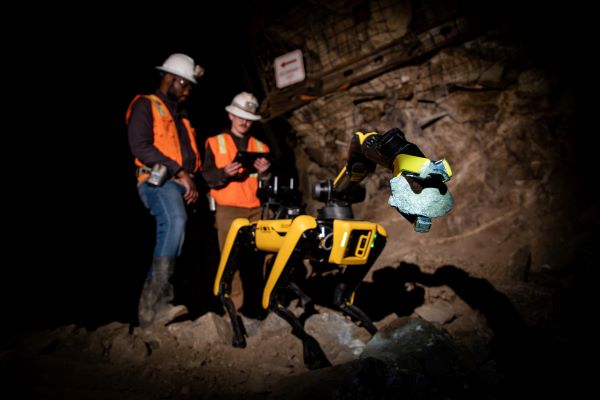
The robot arrived on campus in November 2023. SPOT has four legs, and is about the size of a large dog. It can sense and avoid obstacles, climb stairs, and open doors. It has found a home on factory floors and warehouses, but Choudhury wants to take it underground, where travel is much more difficult.
“If your robot can survive an underground mine, it can survive anywhere, possibly with the exception of Mars,” Choudhury said.
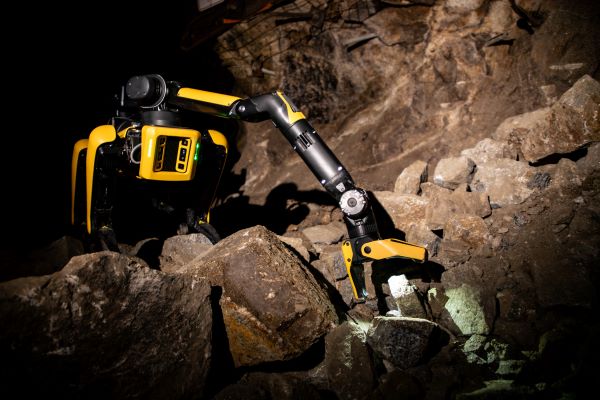
Choudhury’s students traveled to Boston Dynamics’ facilities in Massachusetts to be trained in operating SPOT. Mining engineering junior Arlo Eades, of McArthur, California, said it was an incredible experience.
“It isn't every day that you get to see the very place where cutting-edge technology is being developed and tested,” Eades said. “Bringing that very same technology to an underground environment is an exceptional opportunity to push it to its limits.”
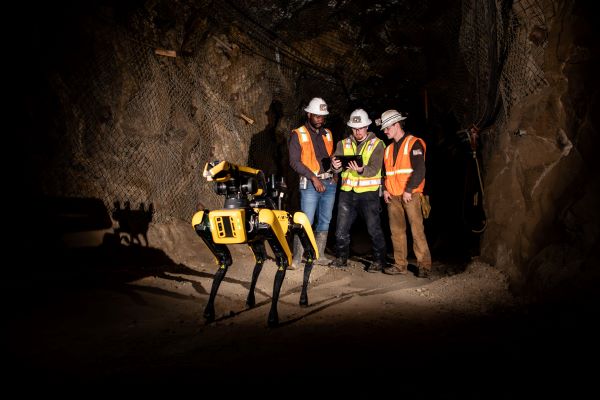
Choudhury’s team must teach the robot to do a task more complicated than walking or opening a door. They are working to program SPOT to walk into the mine and drop a series of radio transmitters that will extend the robot’s range to communicate below the earth’s surface. They then want the robot to collect samples of rock within the mine. One challenge is integrating software that will tell the operator exactly where samples were collected.
“If you collect a sample that has critical minerals in it, it is equally important to know exactly where in that mine you picked the rock up,” Choudhury said.
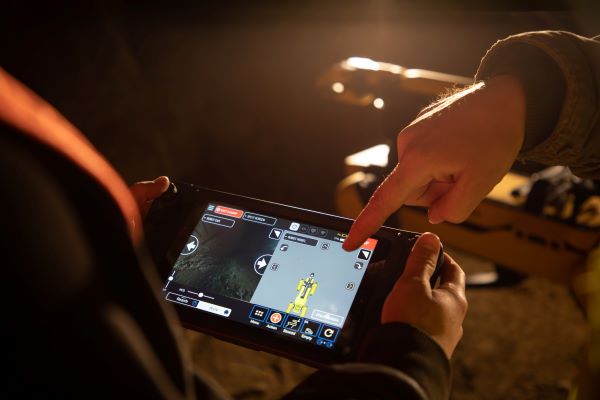
Alan Arthur is a graduate mining engineering student from Accra, Ghana, who says training the robot to autonomously document a sample’s location has been the most challenging part of the project so far. The team is utilizing the Underground Mine Education Center (UMEC). The UMEC is a hands-on, interdisciplinary educational space consisting of the former Orphan Boy and Orphan Girl Mines located immediately west of campus.
“The biggest accomplishment so far is being able to autonomously walk the robot to the portal of the UMEC,” Arthur said. “The next step is to autonomously walk it all the way into the mine and perform simple tasks.”
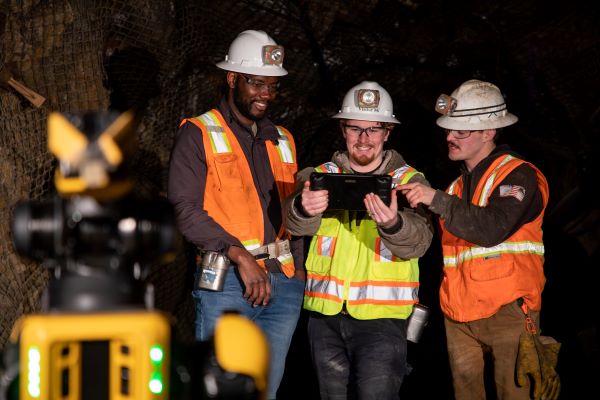
Kodis Campbell is a mining engineering junior from Spring Creek, Nevada.
“This project has helped me better understand project planning and the ability to balance other outside factors,” Kodis said. “Another great feature of this project is the coding that will be required in future development. The world is becoming increasingly digitized and the ability to code is becoming more valuable.”
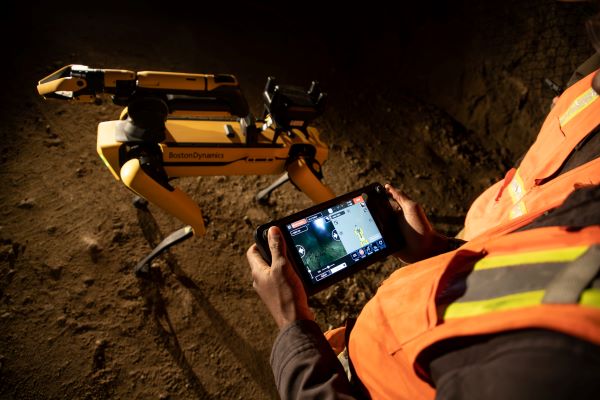
Choudhury says the rise of artificial intelligence and robotics makes it even more important for students to understand the “why?” behind their engineering, since machines are currently trained to answer the more straightforward questions.
“It’s a far more fundamental level of query,” Choudhury said.
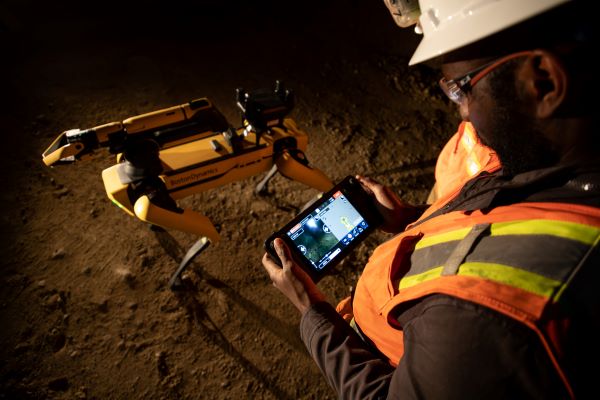
For this particular project, a mining background is invaluable.
“You need to know what problems might come up in a mine,” Choudhury said.
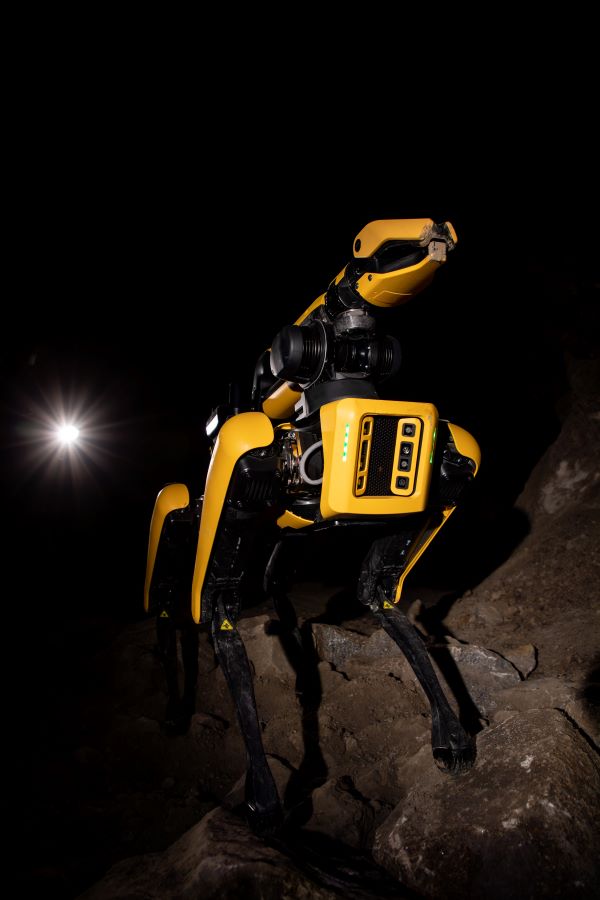
If Choudhury’s research team is successful, and SPOT can find critical minerals in abandoned mines, it could mean big business for southwestern Montana, where ghost towns of abandoned mining communities are numerous.
For now, Choudhury is focused on training SPOT, and building a research group with more members. Students who are interested can contact him at achoudhury@mtech.edu.